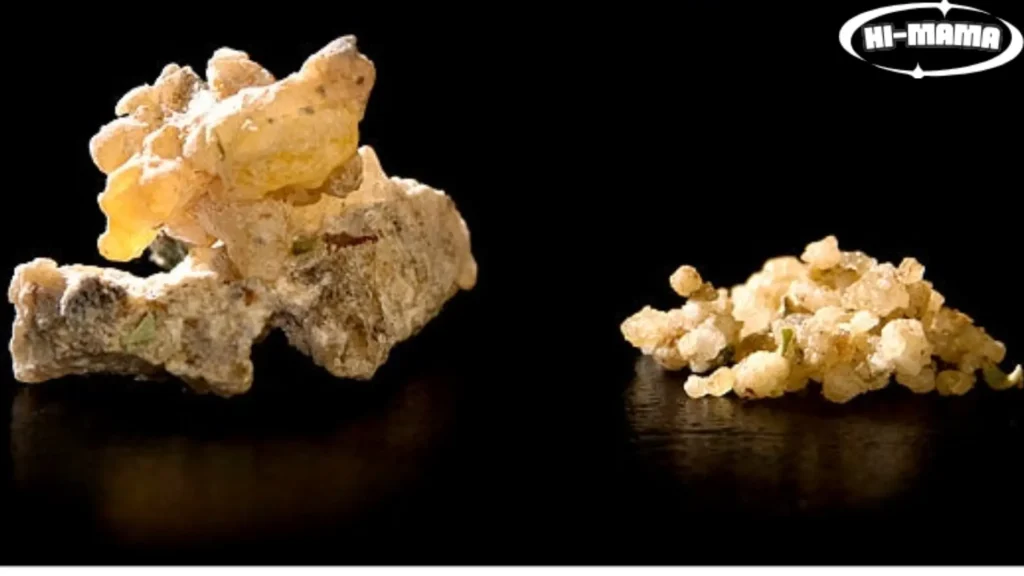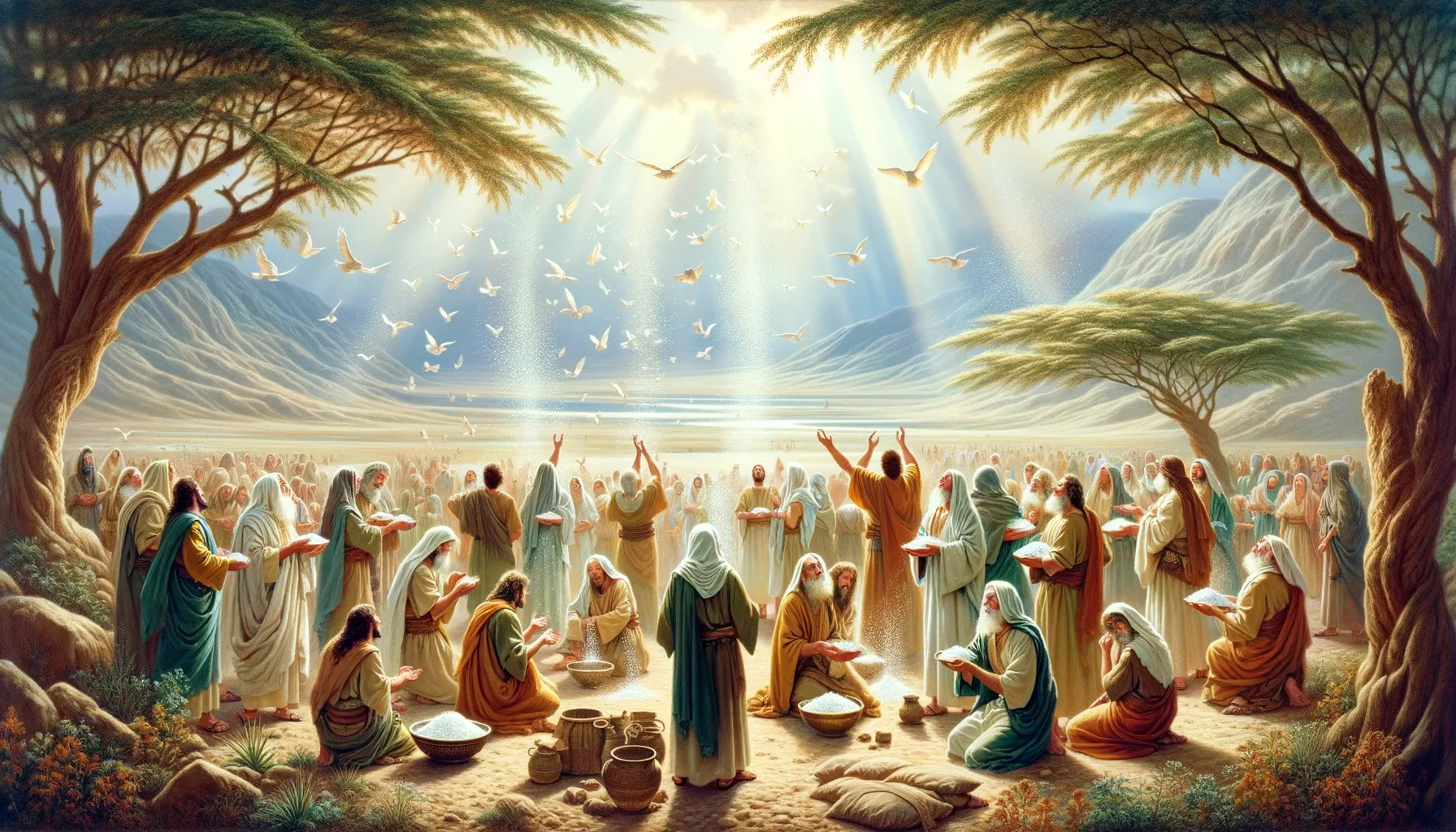Manna is described in the Bible as the miraculous food that fed the Israelites during their journey in the wilderness. Also called “bread from heaven,” manna appeared on the ground each morning as fine flakes or wafers after the dew evaporated. God provided manna to sustain the wandering Israelites for 40 years.
But does manna exist today or was it only a biblical phenomenon? Let’s explore what Scripture says about manna along with scientific and theological perspectives on whether manna could be available in modern times.
What is Manna According to the Bible?
In Exodus 16, the food called “manna” is first described when the Israelites are hungry in the desert after fleeing Egypt. God told Moses he would rain down bread from heaven each day to feed the Israelites.
That evening, quail appeared and in the morning there was a flaky substance on the ground after the dew lifted. The Israelites called the food “manna” which means “What is it?” in Hebrew.
The Bible describes manna in the following ways:
- It appeared every morning after the dew evaporated
- If people tried collecting extra, it would rot and breed worms overnight except on the Sabbath
- Manna appeared as white flakes or wafers on the ground
- It tasted like wafers made with honey
- Manna sustained the Israelites for 40 years in the wilderness
The provision of manna is seen as God’s gracious daily delivery of “bread from heaven” that enabled the Israelites’ survival.
Read more here: Project Baby Eagle

Scientific Explanations for Manna
Although manna is considered a miraculous food from God in the Bible, several scientific theories attempt to explain the possible natural origin of manna.
Some common scientific theories on the source of biblical manna include:
Manna Came from the Tamarisk Tree
- The tamarisk tree excretes a carbohydrate secretion that solidifies into flakes. This natural sugar could have provided nourishment.
Manna Originated from Insect Excretions
- The sap-sucking scale insect secretes a sweet byproduct called mannitol that hardens into globs. This insect excretion may account for biblical manna.
Manna Was Mold or Fungi
- Molds and fungi naturally grow on leaves and bark. Spores from ephemeral desert fungi could have provided temporary food.
Manna Was Lichens
- Lichens made of fungi and algae cling to rocks and trees providing nutrition. Lichens rain down naturally and may explain the biblical phenomenon.
While these scientific explanations could account for the physical presence of manna, they fail to fully explain the amount, timing, and duration of manna according to Scripture. The Bible depicts manna as a miraculous provision.
Does Manna Exist Today?
Even if natural sources like tamarisk tree secretions or temporary desert fungi spawned the ancient manna, could similar phenomena occur today to produce natural manna?
Some possibilities for natural substances resembling manna include:
- Tamarisk tree excretions still appear seasonally in small amounts in the Middle East today.
- Airborne lichen spores and algae occasionally “rain down” after windstorms.
- Sap secretions from certain plants can harden into round globs.
- Honeydew excreted from insects remains a sweet sticky substance.
However, these natural sources would not materialize consistently on a mass scale year-round as depicted in Exodus. The account of manna in Scripture has undeniable supernatural elements.
Spiritual Significance of Manna for the Israelites

Whether or not manna has an identifiable natural source, clearly God’s miraculous provision sustained the Israelites for 40 years. But manna held deeper spiritual significance as well. The Lord intended manna to be a daily reminder for the Israelites to trust and depend on Him to supply their needs.
Manna also tested their obedience by restricting the collection. The Sabbath command to gather extra only on the sixth day conditioned them to honor the Sabbath.
Additionally, the manna spoiled if hoarded except before the Sabbath. This enforced reliance on God’s daily provision rather than their self-sufficiency. For the Israelites, manna carried these spiritual lessons:
- Depend on God daily for provision.
- Obey God’s commands and instructions.
- Trust that He will faithfully sustain you.
So while manna nourished them physically, it held deeper meaning to strengthen the Israelite’s faith and relationship with God.
Is Manna a Symbol or Type of Christ?
Many Bible scholars believe manna holds a symbolic meaning that points towards Jesus Christ. Just as manna was “bread from heaven” that gave life, Jesus called Himself the “bread of life” and the “living bread that came down from heaven” (John 6:35, 6:51).
Parallels exist between manna and Christ:
- Manna was God’s provision for His people; Christ is God’s provision of salvation.
- Manna was bread from heaven; Christ is the bread of life from heaven.
- Manna sustained physical life; Christ offers eternal spiritual life.
- Manna was a gift; salvation through Christ is a gift.
So manna serves as a type or foreshadowing of Jesus, the true bread of life sent from heaven. Christ fulfilled what manna symbolized.
Could Manna Exist in Modern Times?
Based on Scripture, it appears God provided manna miraculously for that specific time, purpose, and audience – the ancient Israelites. There are no biblical examples of manna occurring elsewhere for any other people group.
Since manna served as a physical reminder of God’s provision and promise of deliverance to the Israelites, biblical scholars believe manna fulfilled its symbolic purpose and ceased appearing after the Israelites left the desert and reached the Promised Land.
The miraculous timing, quantity, and duration make it difficult to attribute manna to recurring natural phenomena. While small residues of tamarisk tree resin or insect secretions continue today, these would not account for the manna described in Exodus.
Manna Remains Spiritually Significant Today
While literal manna may have been exclusive to the Israelites in the time of Moses, its symbolic significance remains relevant today. Manna still reminds believers that God faithfully supplies our daily needs.
Additionally, manna points towards Jesus as the eternal bread of life that came down from heaven to give everlasting spiritual nourishment and redemption.
So the hope offered through Christ endures forever, even if the literal food of manna was temporary. When Jesus declared Himself the “bread of life”, He established the new spiritual manna.
Final Words- Does Manna Exist Today
In summary, the biblical account depicts manna as an extraordinary miraculous provision, unlike any naturally recurring phenomena. The quantity, consistency, and timing of manna according to Scripture defy scientific explanation.
While material reminiscent of manna appears in small amounts today from tamarisk trees or insect secretions, these natural sources likely did not produce manna on such a vast scale over 40 years.
The Bible presents manna as unique divine bread from heaven that God supernaturally provided to teach the Israelites to trust and obey Him. Manna spiritually symbolizes God’s faithful, daily provision for His people.
While Jesus fulfilled manna’s symbolic purpose, the lesson that just as God sustained the Israelites, He will supply the needs of His people today remains eternally relevant.

